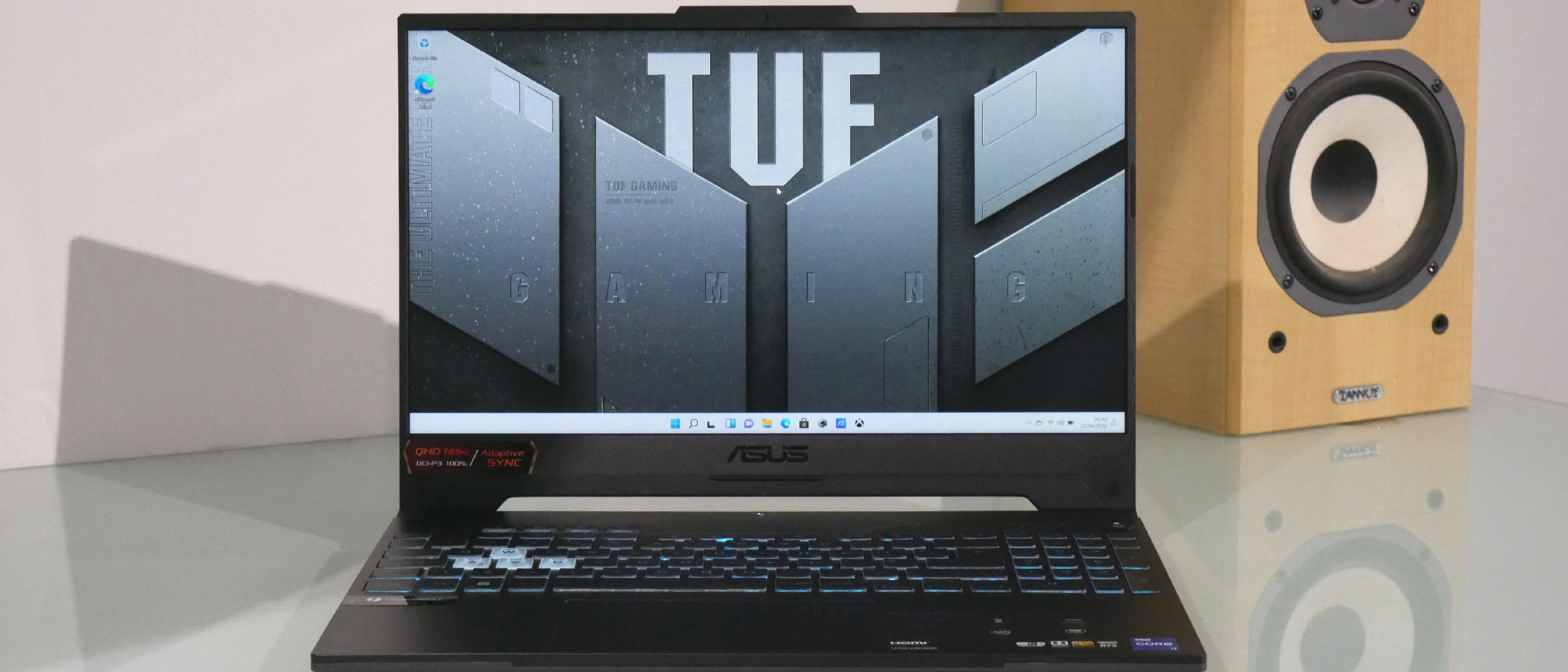Our Verdict
The Asus TUF Gaming F15 has been updated for 2022 with the very latest 12th Gen Intel processors for added punch, but its overall appeal remains the same. With strong CPU and GPU performance, plus a high-spec 1440p screen that boasts not only 165Hz refresh but also 100 percent coverage of the DCI-P3 gamut, this solidly built and specified performance laptop promises to nail everything from gaming to content creation workflows. And all that in a reasonably slim and portable package that offers decent battery life and for a relatively affordable price. In practice? The performance is all there, but the screen quality disappoints.
For
- Great all-round performance
- Sturdy build quality
- Decent battery life for this class of laptop
Against
- Screen quality is fairly poor
- Large chin bezel compromises form factor
- Disappointing sound quality
Why you can trust Creative Bloq
Newly updated for 2022, the Asus TUF Gaming F15 is a no nonsense performance laptop and all the better for that. It's solidly built and yet tolerably slim and portable for a 15.6-inch machine.
CPU: Intel Core i9-12700H (14-core)
Graphics: Intel Iris Xe, Nvidia RTX 3060
RAM: 16GB
Screen: 15.6-inch, 2,560 x 1,440, 165Hz, IPS LCD
Storage: 512GB SSD
Ports: 1x USB Type-C, 1 x USB Type-C with Thunderbolt, 2x USB-A, HDMI 2.0, ethernet, 3.5mm audio jack
Size: 35.4 x 25.1 x 2.49 cm (W x H x D)
Weight: 2.2 kg
Inside, you get strong components including Intel's latest 12th Gen CPU and Nvidia RTX 30 Series graphics, while up front the 15.6-inch screen boasts both full 1440p resolution and 165Hz refresh. The 165Hz refresh in particular marks this out as a gaming-centric laptop. But the screen also boasts 100 percent coverage of the DCI-P3 gamut. That bodes well for content creation.
What's more, not only do the high performance components promise to make light work of all kinds of productivity tasks. Features like excellent connectivity, including Thunderbolt 4, add to the TUF's all-round workhorse appeal.
It even promises decent battery life with battery packs up to 90Wh available. On paper, the TUF Gaming F15 looks like a very solid prospect for everything from gaming to content creation, and a worth addition to our best gaming laptops roundup. And it does all that while substantially undercutting the premium competition from the likes of Dell Alienware, Razer and Asus' own high-end options in terms of price.
Asus TUF Gaming F15 (2022) review: Features and design
The Asus TUF Gaming F15 is a largely conventional performance laptop with a 15.6-inch form factor. The screen is based on IPS tech for improved viewing angles and colour accuracy. Resolution wise, we're talking 1440p and so 2,560 by 1,440 pixels. That's a decent compromise between visual detail and not putting too much load on the graphics subsystem for games.
Speaking of gaming, the panel is good for fully 165Hz refresh, so response and latency promise to be pretty punchy. However, Asus also claims a very impressive 100 percent coverage of the DCI-P3 digital cinema colour space, which implies excellent colour accuracy, too. One affordable laptop for both gaming and content creation? It certainly looks like it.
Slim bezels on three sides of the display, meanwhile, keep the width of the chassis in check, but a big, fat chin extends the depth of the laptop's body. Still, at least it makes space for a generously proportioned trackpad, which is always welcome.
That aside, design details of note begin with the webcam that sticks out of the top of the display. It's actually only a 720p item, so we'd have prefer to have seen it more tightly integrated and without the need for a bezel bump.
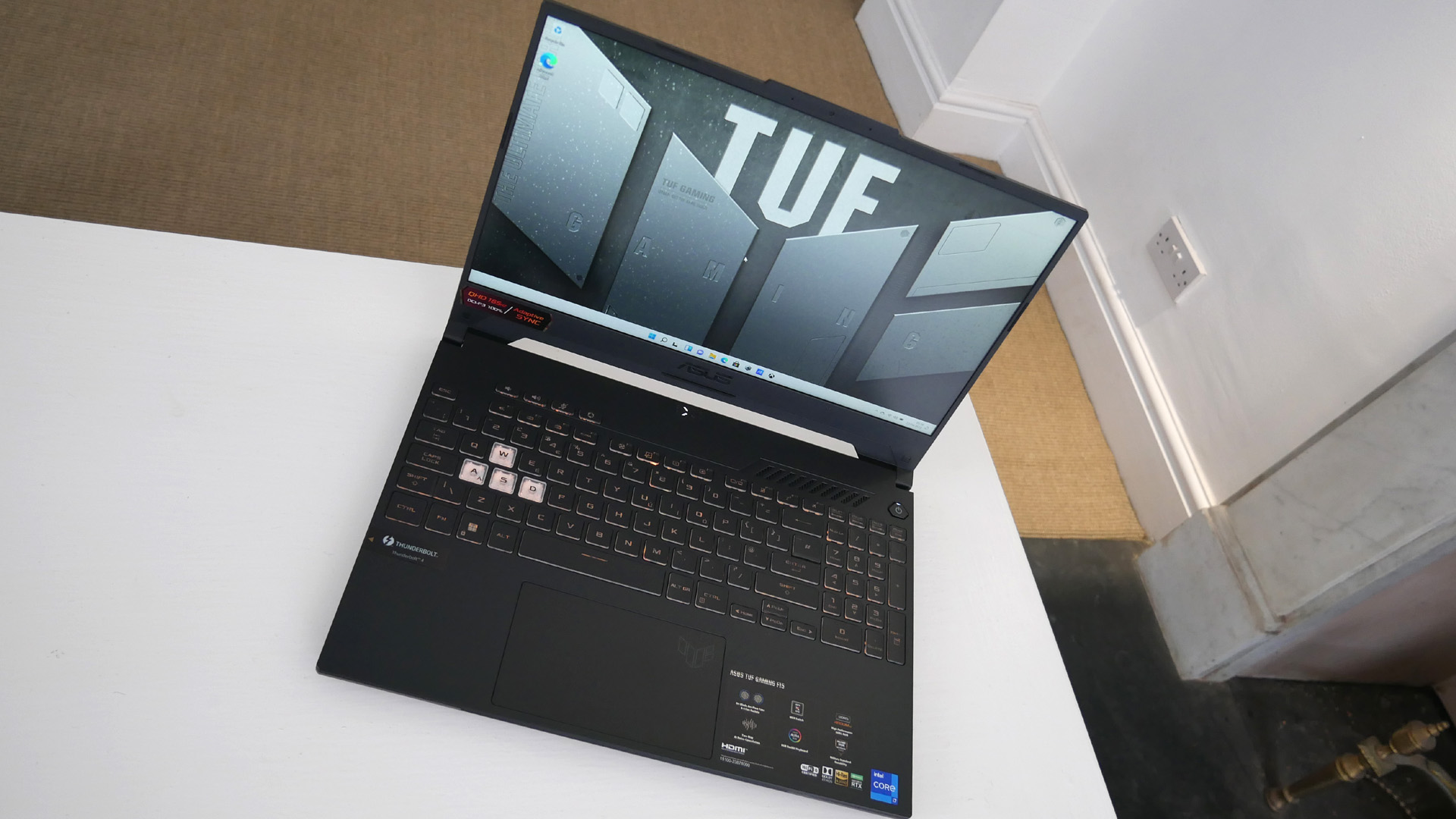
More unambiguously successful is the full-sized keyboard complete with number pad. It makes for a nice solid base for typing, even if the contrast-coloured 'WASD' keys and RGB backlighting are gamery gimmicks of limited real-world utility. We also like the sturdy feeling metal rear screen cover. The rest of the chassis is plastic, but it's very rigid and robust. You could daily drive this laptop with confidence that minor lumps and bumps aren't going to do lasting damage.
Connectivity is another strong point. On the left of the chassis are a pair of USB Type sockets, one of which is the real Thunderbolt 4 deal with 40Gbps of bandwidth. That's ideal for hooking up something like an external SSD and firing across images and video at speed. That side of the laptop also has an ethernet port for wired networking (wireless connectivity is covered by WiFi 6 and Bluetooth 5.2) plus a USB-A socket and headphone jack.
On the right you'll find a single USB-A port, which is slightly suboptimal given the power port is on the busier left side of the chassis and can interfere with connecting various peripherals and devices.
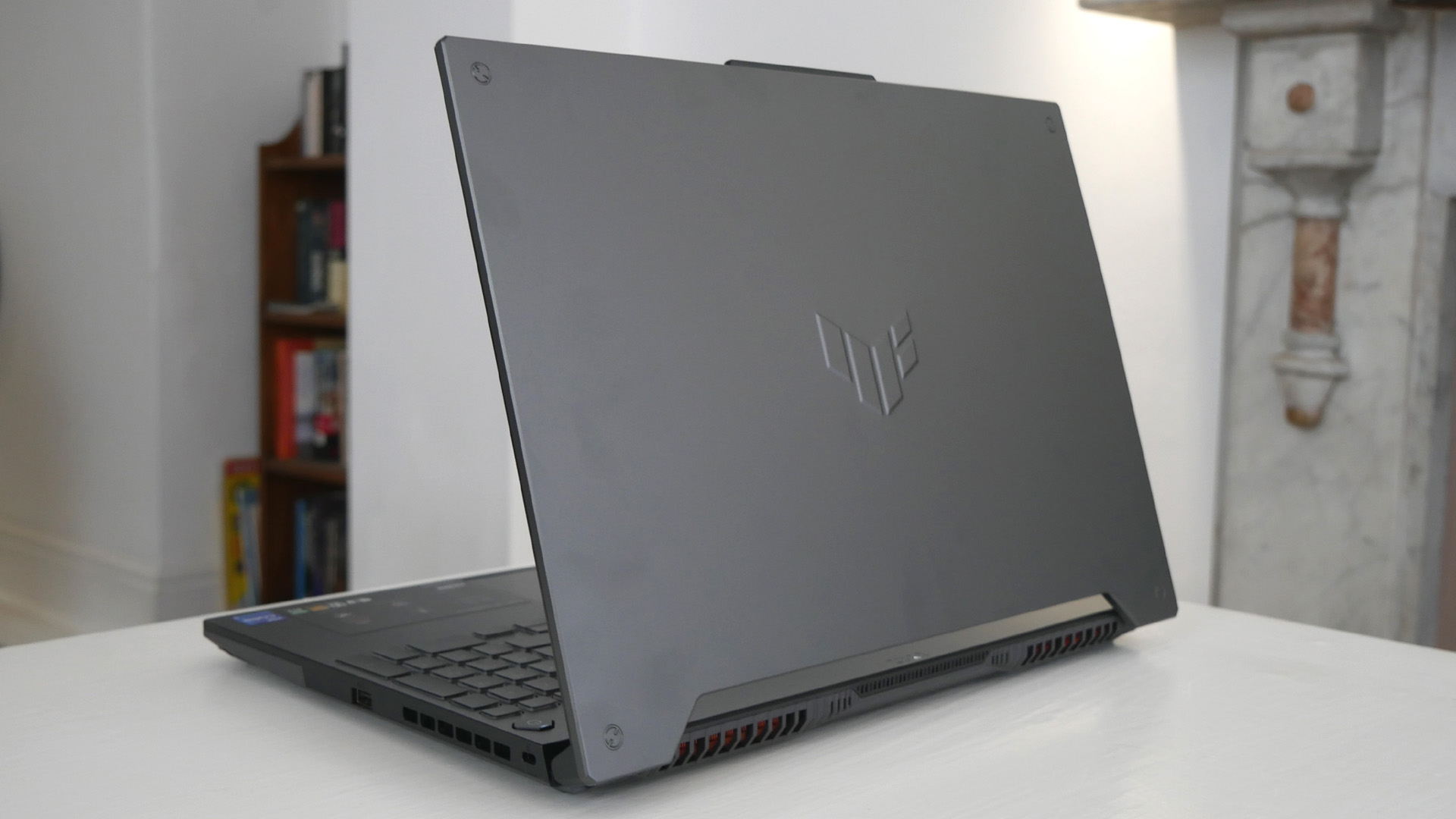
Of course, inside is where the real action happens. Asus has gone for the Intel Core i7-12700H. It's got the same cutting-edge 12th Gen architecture as the more expensive 12900H, including six high performance cores and eight efficiency cores, but runs at slightly lower clocks. Graphics is handled by an Nvidia RTX 3060 GPU. It's a middle to upper middle tier mobile graphics chip which offers far, far more performance than any integrated graphics core.
Elsewhere, there's 16GB of RAM, which is enough for all but the most demanding workflows, and a 1TB Samsung SSD for storage. Put it all together, and you have a very complete all-round package.
Asus TUF Gaming F15 (2022) review: price
With fully configured pricing of $1,499 or an estimated £1,299 in the UK, you're getting a lot of laptop for your money with the Asus TUF Gaming F15 in its revised 2022 configuration. It isn't as sleek as the Razer Blade 15 or quite as powerful as Dell's Alienware X15 in its highest specification. But the Asus's core components are directly comparable and the price clearly undercuts those premium alternatives. More similarly priced mid-range alternatives to the TUF Gaming F15 include the Lenovo Legion 5 Pro.
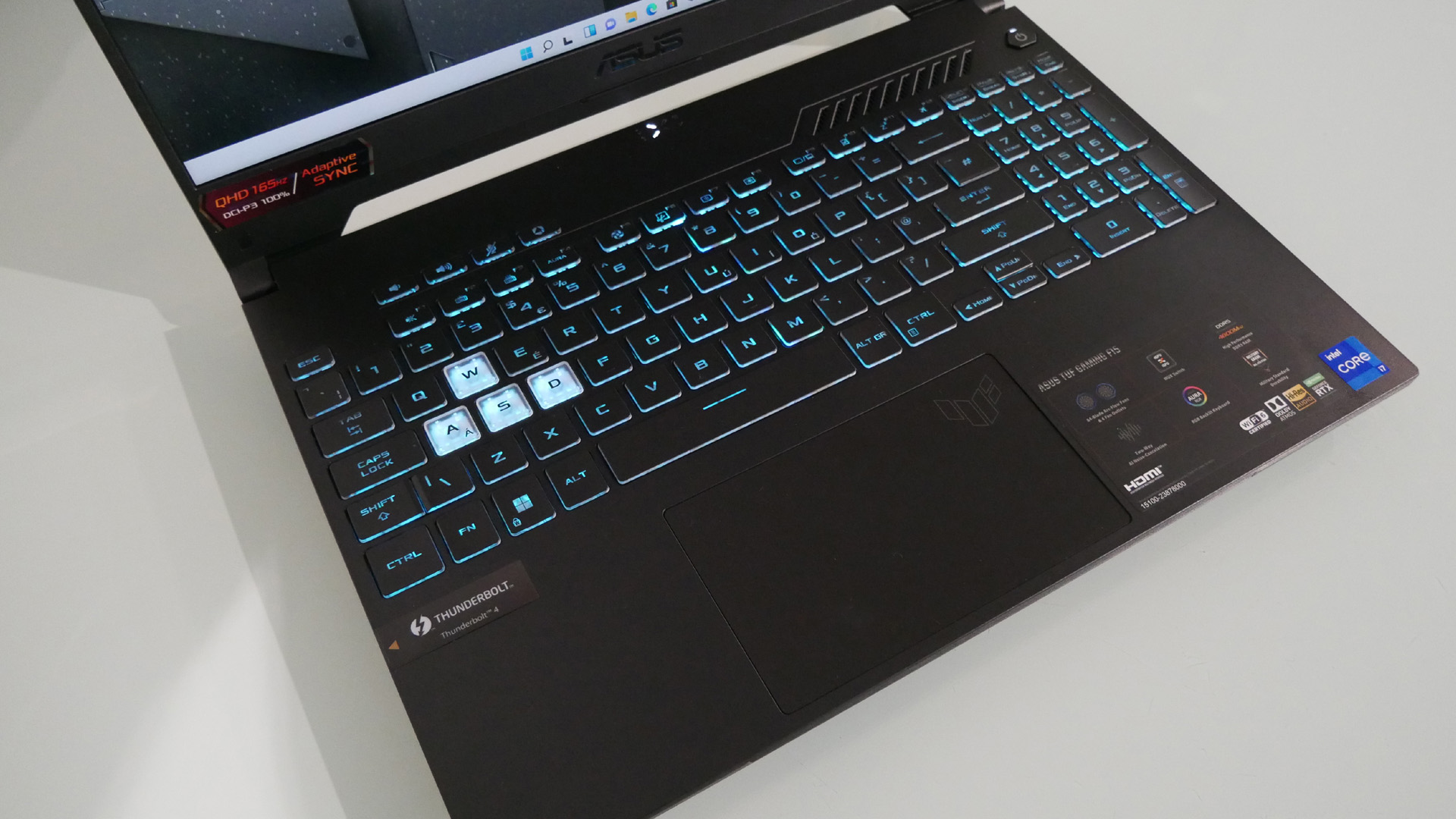
Asus TUF Gaming F15 (2022) review: performance
3DMark: Night Raid: 45,628; Fire Strike: 20,218; Time Spy: 9,078
Cinebench R20 Multi-core: 6,401 points
GeekBench 5: 1,769 (single-core); 12602 (multi-core)
PCMark 10 (Home Test): 5,837 points
Battery Life (1080p movie test): 7 hours and 5 minutes
Total War: Three Kingdoms: (1080p, Ultra): 82 fps; (1080p, Low): 260 fps
Metro Exodus: (1080p, Ultra): 70 fps; (1080p, Low): 237 fps
Crystal Disk Mark: Read 3,153MB/s, write 2,055MB/s, 4K read 30MB/s, 4K write 67MB/s
4K x265 (HEVC) encode: 12fps
For the most part, the Asus TUF Gaming F15 gaming performs precisely as you'd expect and indeed hope. The Intel Coere i7-12700H is a peach when it comes to CPU performance. The combination of six performance cores and eight efficiency cores mean you have all the performance you need to pretty much any application type. Whether it's crunching through video encodes using all 20 available threads or pulling in raw image files, this thing mostly flies.
As for the Nvidia RTX 3060 GPU with 6GB of video memory, it's not quite in the same class as that Intel CPU. It's clocked quite high at 1,605MHz. But it's a mid-range rather than high-end GPU. Gamers will notice it struggles to put out frame rates to do justice to the 1440p display's 165Hz refresh. However, for GPU-accelerated workloads in applications like Adobe's Creative Cloud, it's got plenty of punch.
The one exception in broad platform performance terms involves the 1TB Samsung SSD. With around 3GB/s reads and 2GB/s writes, it's not exactly a slouch. However, the relatively tardy 30MB/s read and 67MB/s write in random access 4K storage workloads is disappointing. That won't slow down large file transfers. But it is important for day-to-day responsiveness, which hinges on lots of small data transfers.
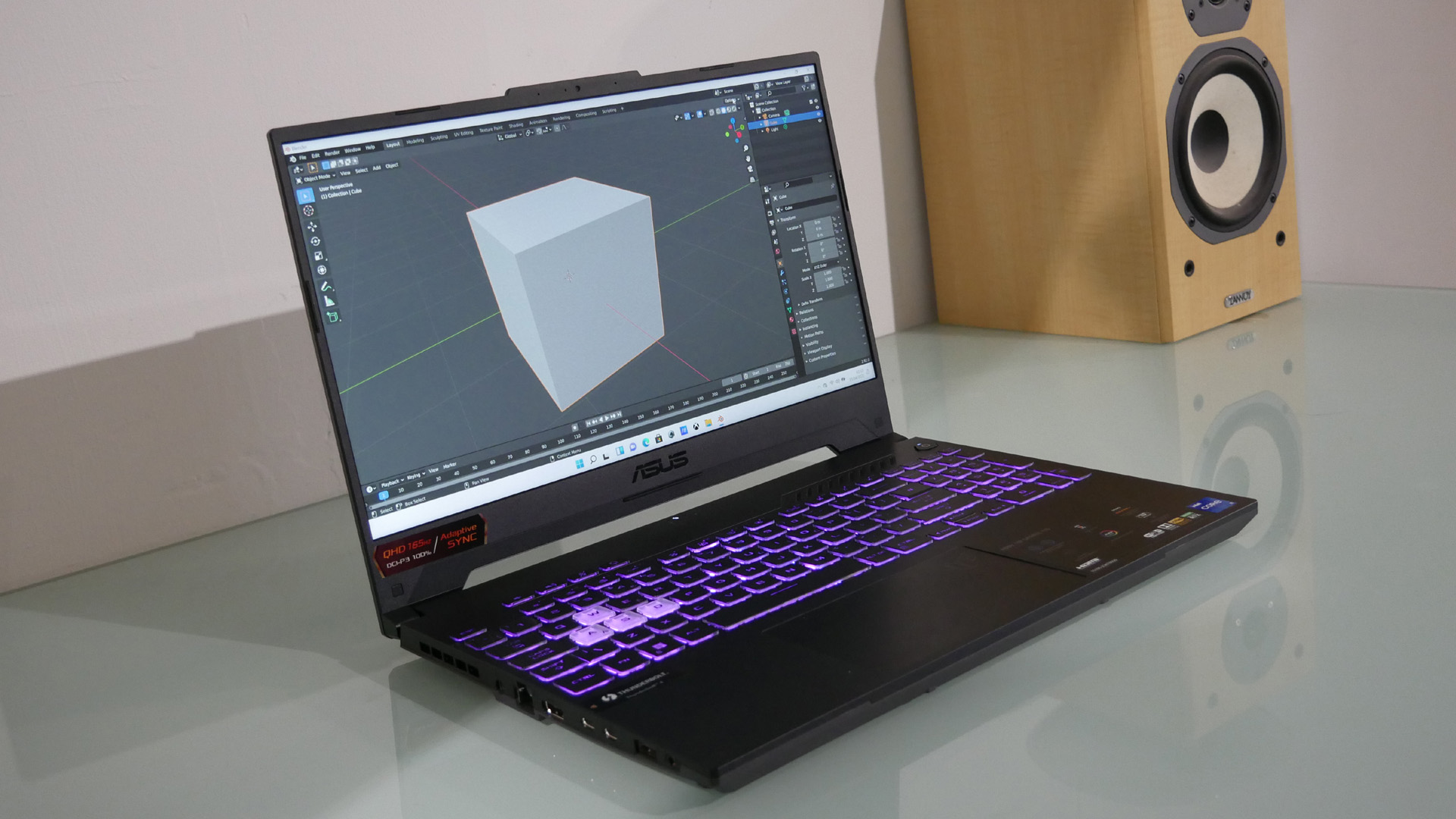
Another slightly underwhelming aspect in performance terms is that 15.6-inch 1440p screen. On paper the 165Hz refresh and 100 percent coverage of the DCI-P3 digital cinema space looks like the perfect combo of fun and precision. In practice, while it is a quick panel, it lacks vibrancy and visual fizz. Forget using this laptop outside, it's not even nearly bright enough. There's also a little backlight bleed around the edges of the panel.
While we're covering off the main disappointments, the integrated speakers aren't great, either. Simultaneously muddy and thin, they get nowhere near even Apple's entry-level MacBook Air, let alone the MacBook Pro models. Truly, PC laptops are miles behind when it comes to audio quality.
Finally, battery life is relatively good for this size, class and price of laptop at around seven hours of 1080p video playback. That number will inevitably be much smaller under heavier workloads. But for light tasks including web browsing, it will survive for most of the day untethered from a power socket.
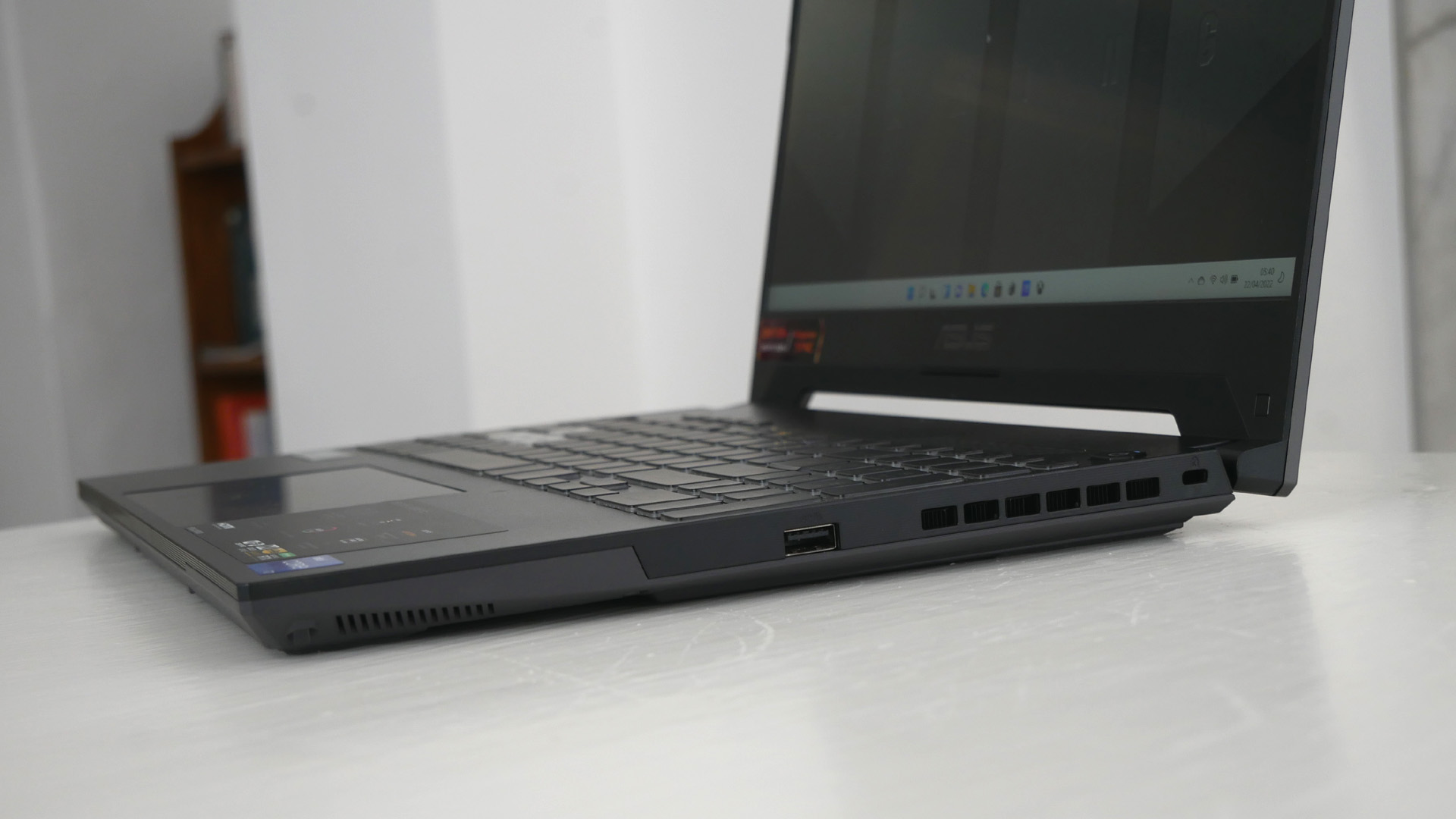
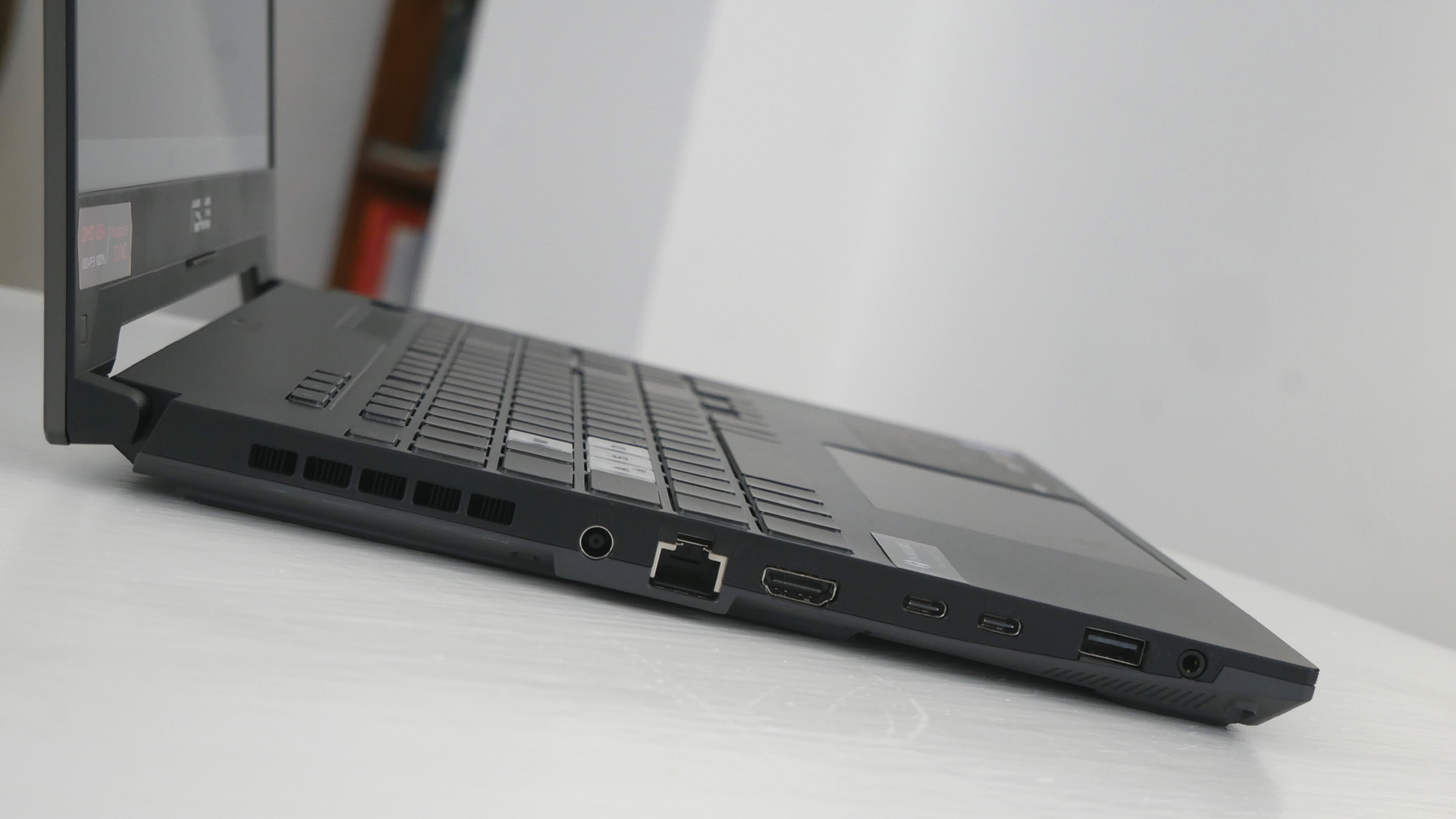
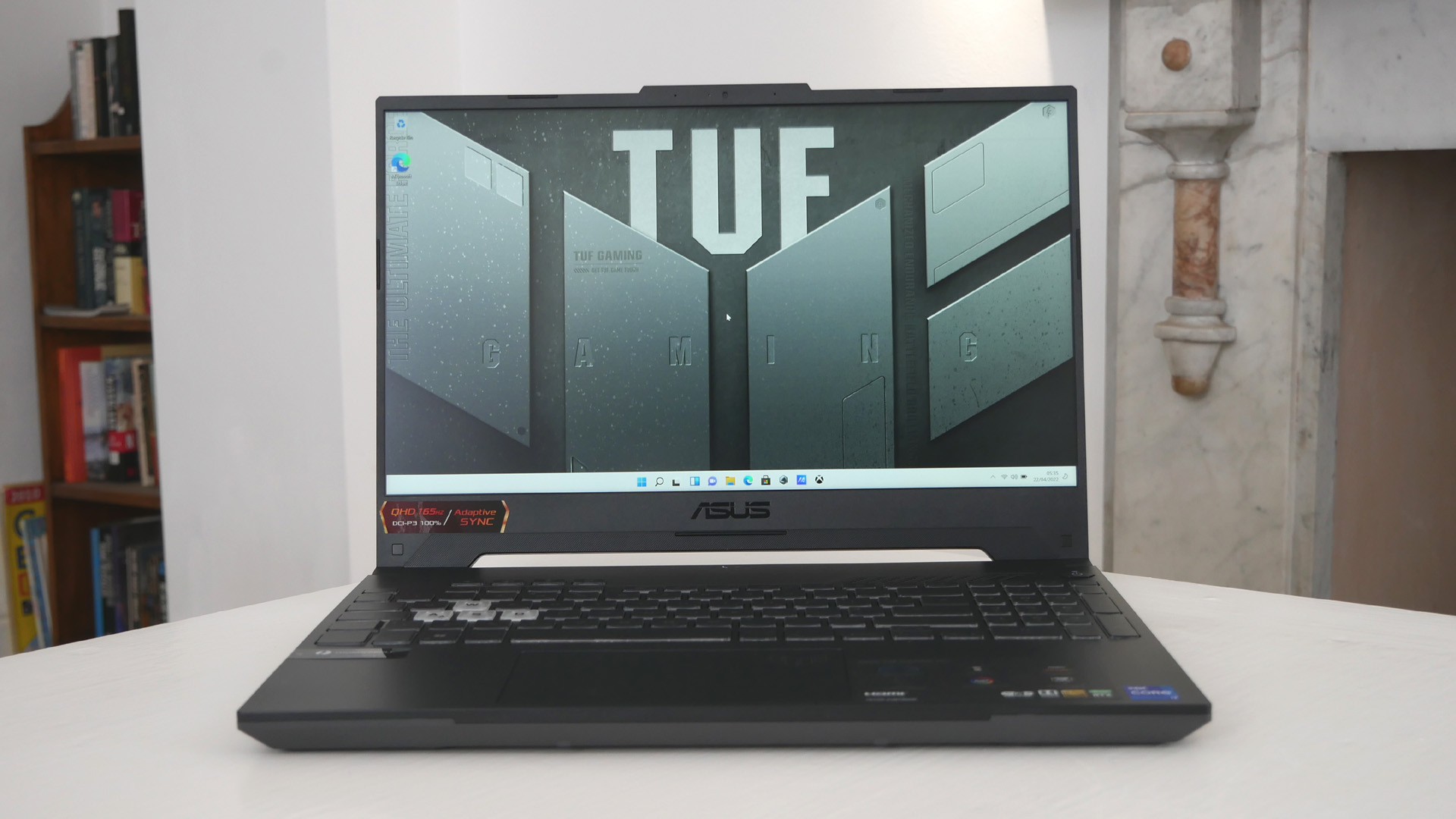
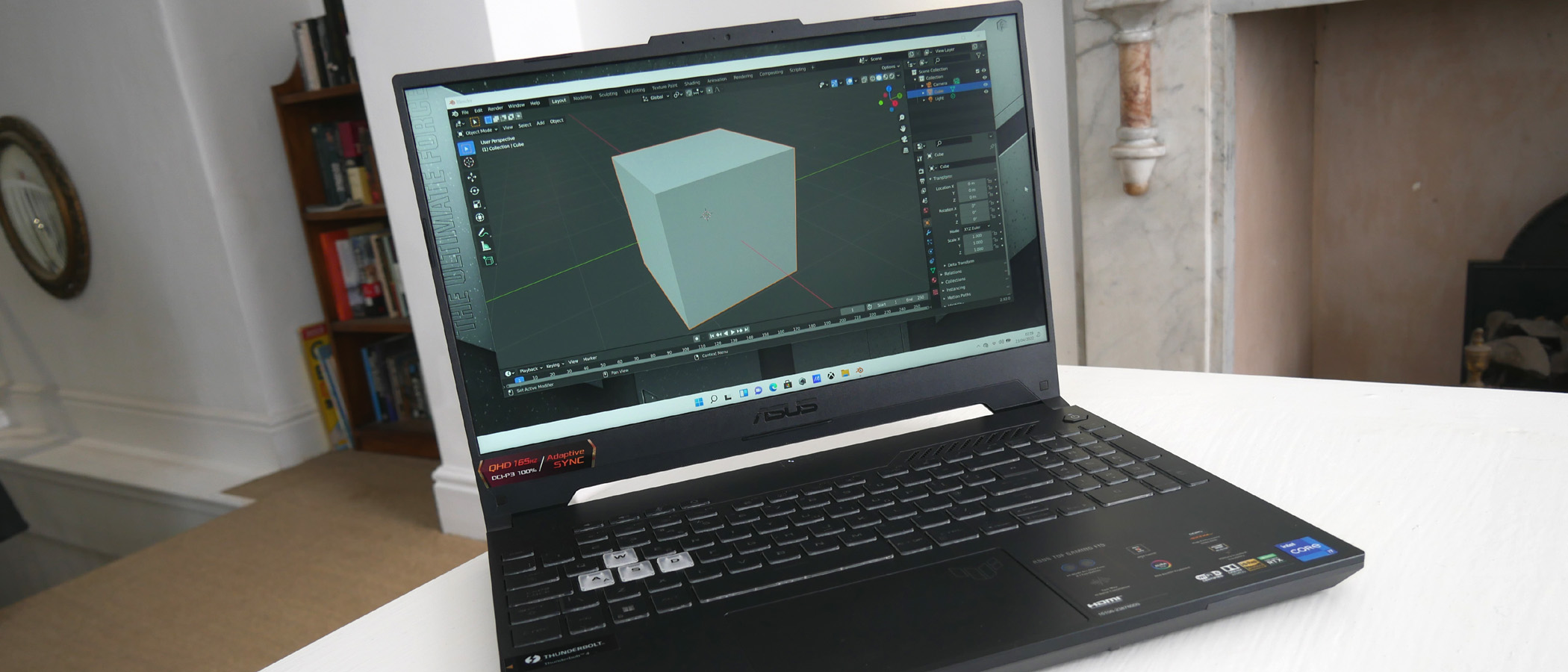
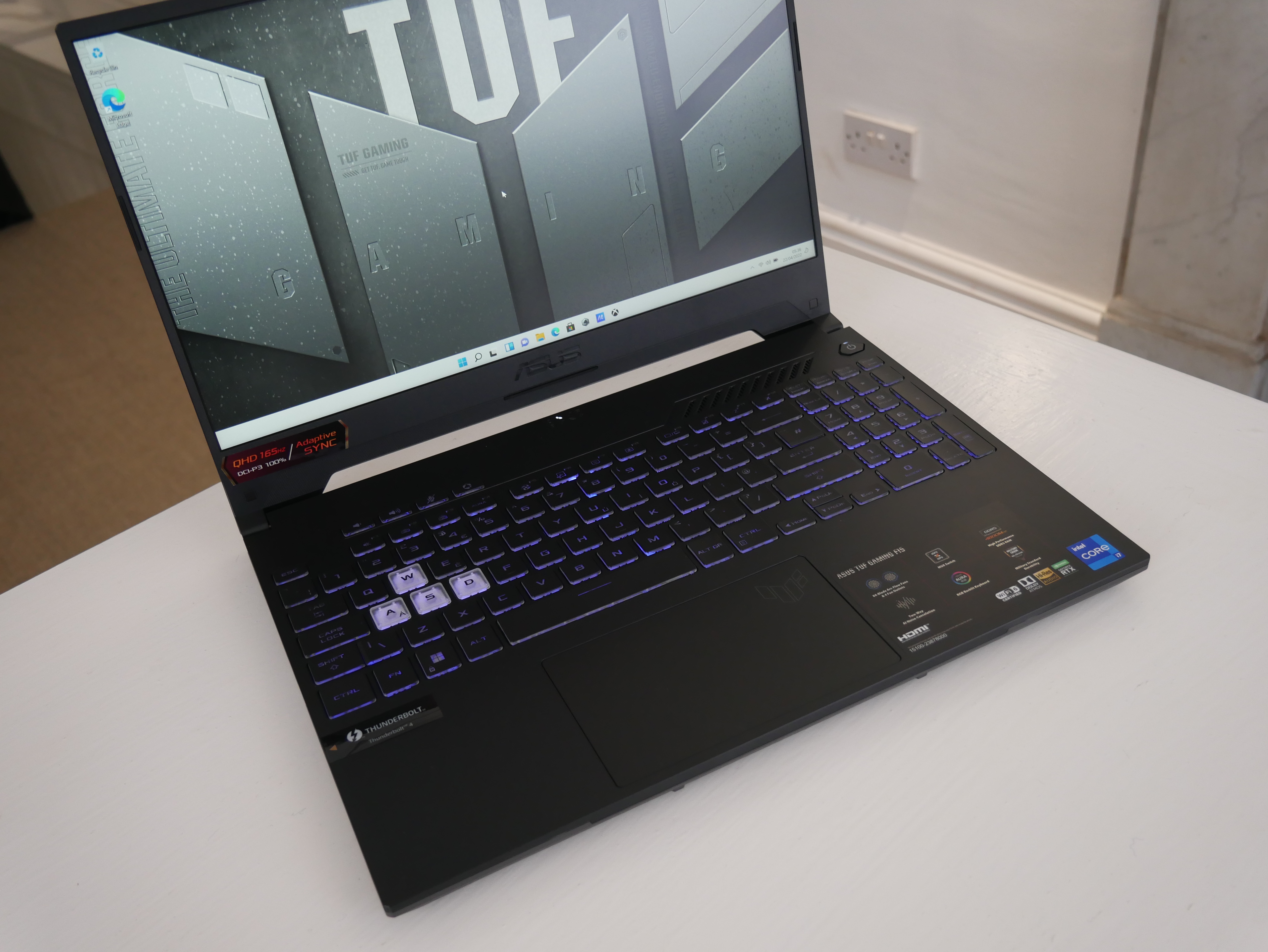
Should you buy the Asus TUF Gaming F15 (2022)?
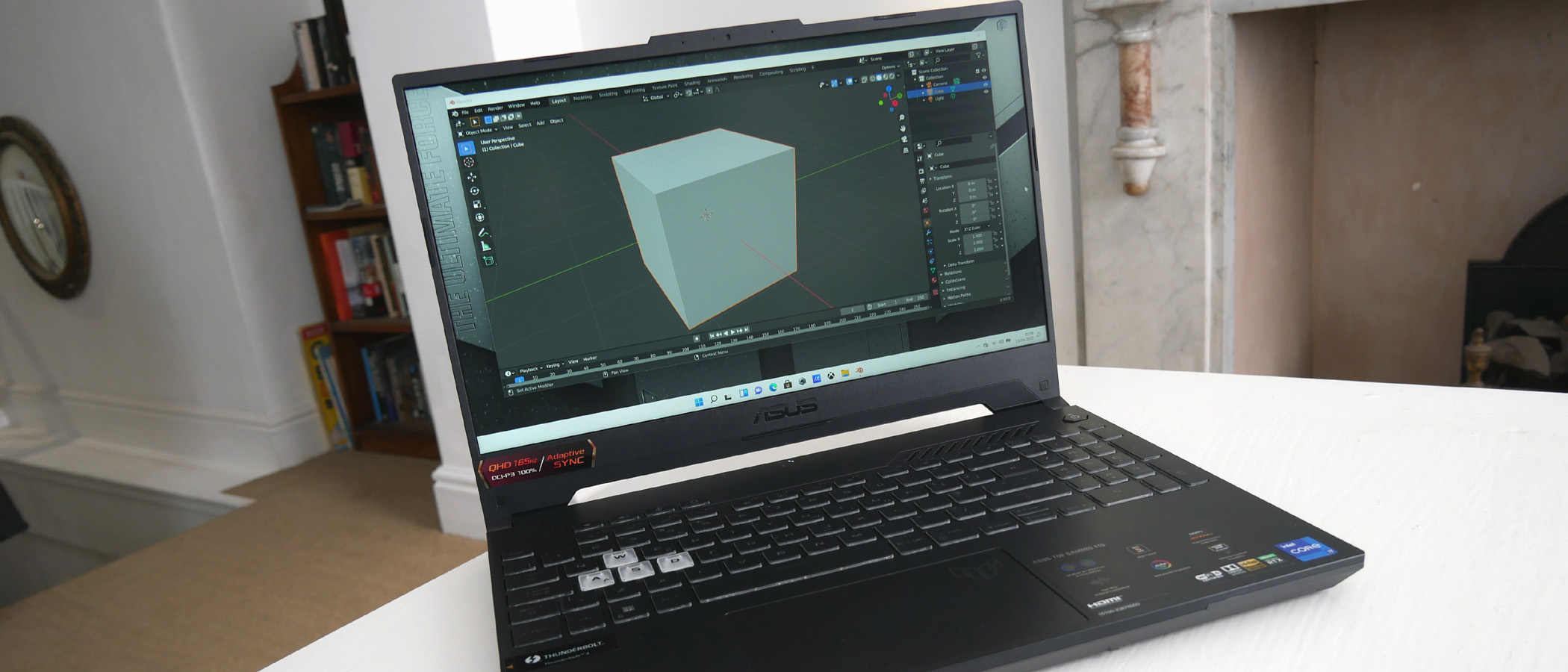
The Asus TUF Gaming F15 has an awful lot going for it. There's CPU performance to spare enough graphics grunt for all but the most demanding content creation and productivity needs. It's a solidly built beast, too, and battery life of around seven hours isn't too shabby for this class of laptop.
That you get all those benefits at a relatively modest price makes for a conspicuously sweet deal. At least it would were it not for a disappointing screen. Technically, it's a strong performer with 165Hz refresh and wide colour coverage. But the subjective experience lacks visual punch.
Read more: The best laptops for graphic design

Thank you for reading 5 articles this month* Join now for unlimited access
Enjoy your first month for just £1 / $1 / €1
*Read 5 free articles per month without a subscription

Join now for unlimited access
Try first month for just £1 / $1 / €1
out of 10
The Asus TUF Gaming F15 has been updated for 2022 with the very latest 12th Gen Intel processors for added punch, but its overall appeal remains the same. With strong CPU and GPU performance, plus a high-spec 1440p screen that boasts not only 165Hz refresh but also 100 percent coverage of the DCI-P3 gamut, this solidly built and specified performance laptop promises to nail everything from gaming to content creation workflows. And all that in a reasonably slim and portable package that offers decent battery life and for a relatively affordable price. In practice? The performance is all there, but the screen quality disappoints.

Jeremy has been writing about technology since the 90nm Netburst era (Google it!) and enjoys nothing more than a serious dissertation on the finer points of input lag and overshoot followed by a forensic examination of advanced lithography. Or maybe he just loves machines that go 'ping!'. He has written for a variety of publications, including TechRadar, The Independent, Digital Camera World, T3, PC Gamer, GamesRadar+.
